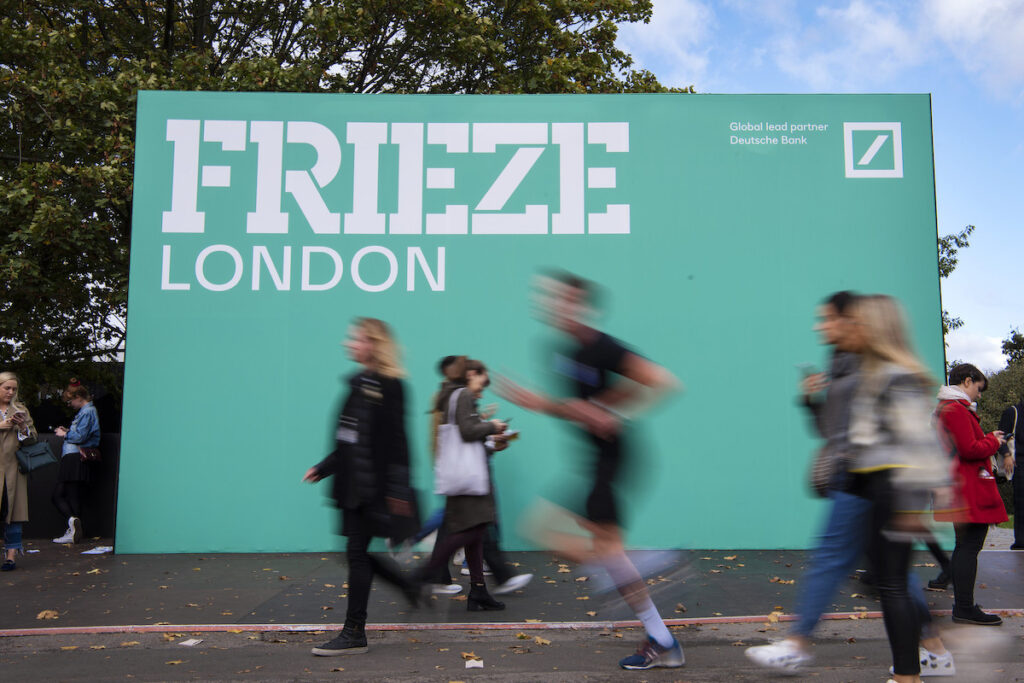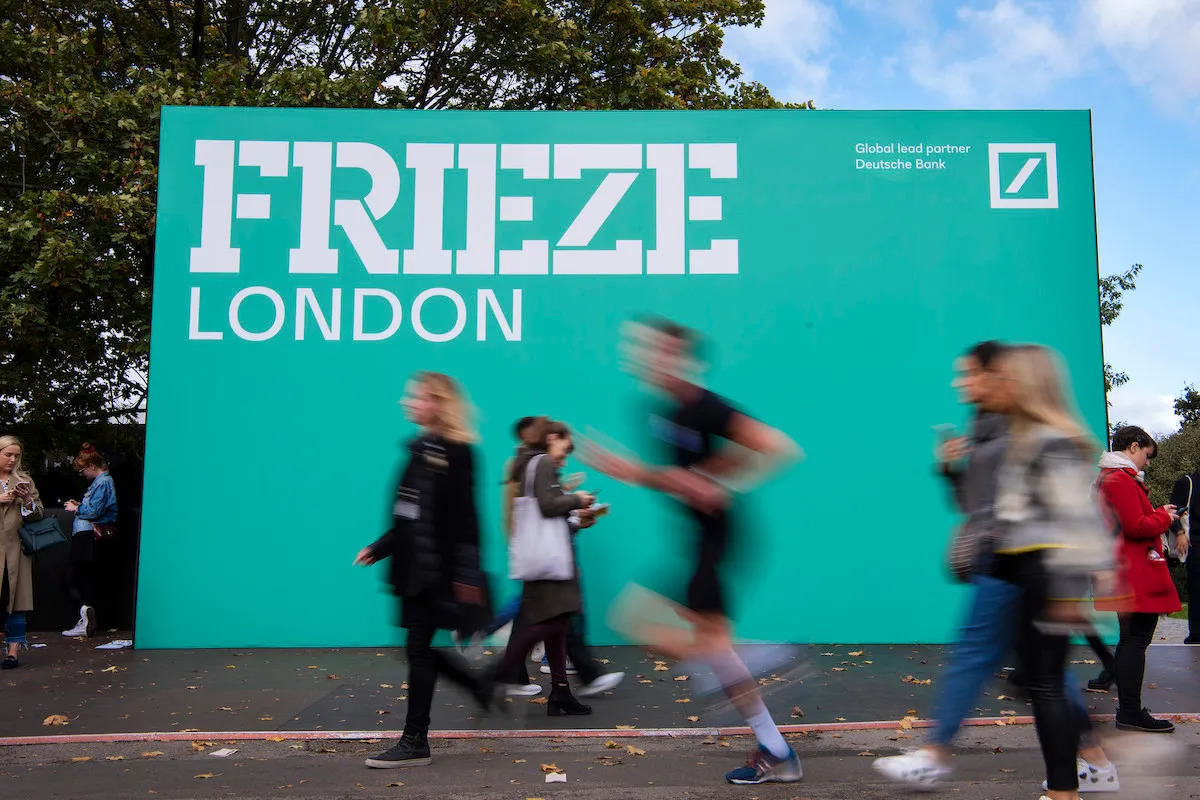
As Frieze London celebrates its 20-year anniversary, ARTnews looks back at some of the most unconventional, groundbreaking, and down-right zany artworks that have debuted at the fair. Over the years, they have tackled such subjects as child play, the market, and cultural value. As we enjoy (st)rolling down memory lane, you can catch this year’s edition at Regent’s Park through October 15.
-
Paola Pivi’s Untitled (slope) in 2003

Image Credit: Courtesy Perrotin. Photo Hugo GLENDINNING The fair’s first edition opened with a roll—for those brave enough to embrace their inner child—down an artificial grass hill. The whole fair was constructed around Italian multimedia artist Paola Pivi’s installation, which had paid actors and participants alike literally rolling into the artwork of nearby booths. “It was a beautiful thing that isn’t possible in an expanded world now,” Frieze London cofounder Amanda Sharp told the New York Times at the time.
-
Rob Pruitt’s Flea Market at Gavin Brown’s Enterprise in 2007
Post-conceptual artist Rob Pruitt decided to turn the sale of art at a commercial fair on its head by setting up a flea market in the booth of Gavin Brown’s Enterprise. There, attendees could purchase a plethora of items from homemade brownies and outmoded TV remote controls to signed photos of Miles Davis and Patti Smith and second-hand T-shirts. At the front, Australian beauty mogul Poppy King gave lipstick consultations. Pruitt’s flea market was a gesture that not only poked fun at galleries and art world elite, but in some ways aimed to level the playing field, offering some items for free. “There are those that say that Frieze Art Fair isn’t much more than a massive, posh yard-sale,” the Guardian reported live on the scene, “so it seems no real surprise that Pruitt is taking that to its logical conclusion with this stand.”
-
Jake and Dinos Chapman’s Currency Project at White Cube in 2007
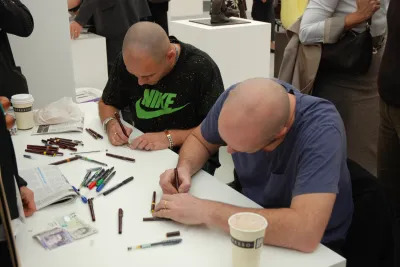
Image Credit: Courtesy Jake and Dinos Chapman That same year, the Chapman brothers quickly increased the value of attendees’ £10 and £20 notes by drawing on them as part of their artwork for the fair. A commentary on not only the value of art but also the British monarchy itself, many of the interventions came at the expense of Queen Elizabeth II. The spectacle quickly became one of the highlights of the event.
-
Richard Prince’s Untitled (Original) in 2007
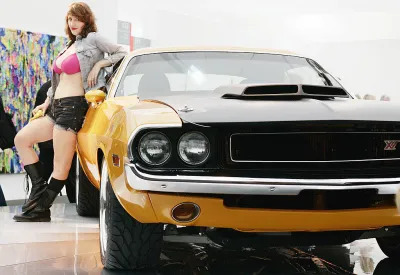
Image Credit: Photo Shaun Curry / AFP via Getty Images On a rotating silver disk, Richard Prince installed a bright yellow, souped-up 1970 Dodge Challenger, which was rubbed at various points by a scantily clad woman. Prodding the American dream with his appropriations, the meaning of Prince’s work feeds on the nature of its ambiguity. Frieze billed the piece “the ultimate vehicle in which to pursue the combined fantasies of upward and lateral mobility.”
As ARTnews editor-in-chief Sarah Douglas recalled this week the model’s “role was to polish the car and pose for photos, but she also represented an open invitation for fairgoers to ogle her with plausible deniability—they might, after all, be ogling the car. Post-MeToo, it seems inconceivable that such a thing transpired. Did no one on the selection committee raise the red objectification-of-women’s-bodies flag?”
-
Michael Landy’s Credit Card Destroying Machine at Thomas Dane Gallery in 2010
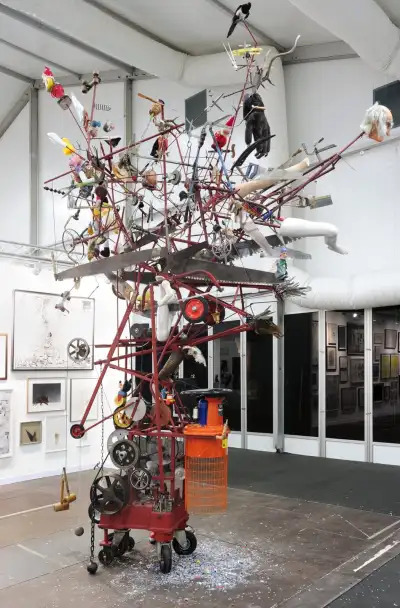
Image Credit: Courtesy Thomas Dane Gallery Before Banksy shredded Girl with Balloon (2006) at a 2018 Sotheby’s auction, British artist Michael Landy set up a machine to shred credit cards. In exchange, participants received an original Landy drawing at the cost of their credit card. It quickly grew in popularity, with hundreds lining up to participate. The work was purchased by collector Dimitris Daskalopoulos and has subsequently made appearances in such places as Athens and Basel, Switzerland.
-
Simon Fujiwara’s Frozen in 2010
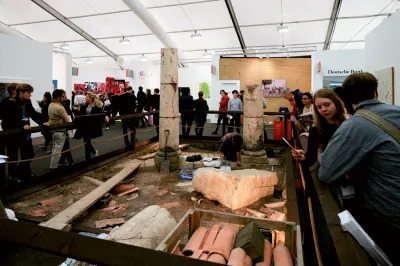
For those wishing to embrace their inner Indiana Jones, look no further than Simon Fujiwara’s pseudo-archaeological dig that he dispersed throughout the fair in 2010. Fujiwara offered a glimpse into six fictive sites that once comprised the Frozen City. The sites included a patron’s home, a brothel, a marketplace, a dead artist’s crypt, and a restaurant complete with artifacts such as ceramics, ancient daggers, and Roman coins.
“It is assuredly not lost on the artist, who was trained at Cambridge University as an architect, that this allegorical, simulated city recalls the life-size re-creations of a natural history museum,” explained an Art in America profile of the artist. “Fujiwara eschews fully immersive environments. His installations keep the viewer at a distance and are positioned within—or, in works like Frozen, appear to be the literal foundation of—a larger structure such as a fair or a biennial, the artist aligning those venues with themes of entertainment, tourism and the exotic.”
-
Pope.L’s Tomato Shy in 2012
American performance artist Pope.L hosted a tomato throwing competition back in 2012. Visitors watched from above as teams of people dressed in all-white threw the red fruit at one another in good jest. The piece was part of a larger food-based presentation hosted by the art organization and working farm Grizedale Arts Project.
-
Carsten Holler’s Gartenkinder at Gagosian in 2014
German artist Carsten Holler offered a playful reprieve for children and adults, complete with oversized dice that could be crawled through, a toy octopus, and a large rocking squishy mushroom. “At its most fundamental, all art is play–play with forms, figures, ideas, metaphysics, even the gods. And just as children absolutely need to play to come alive as humans, so adults need the toys of art to be fully themselves,” reported Artnet News on the scene. “Höller’s achievement was to collapse the two kinds of play into a single work.”

